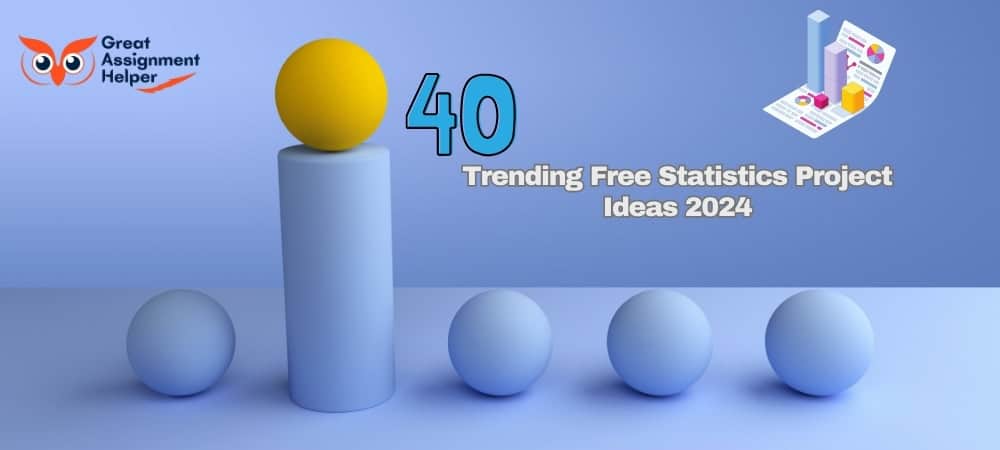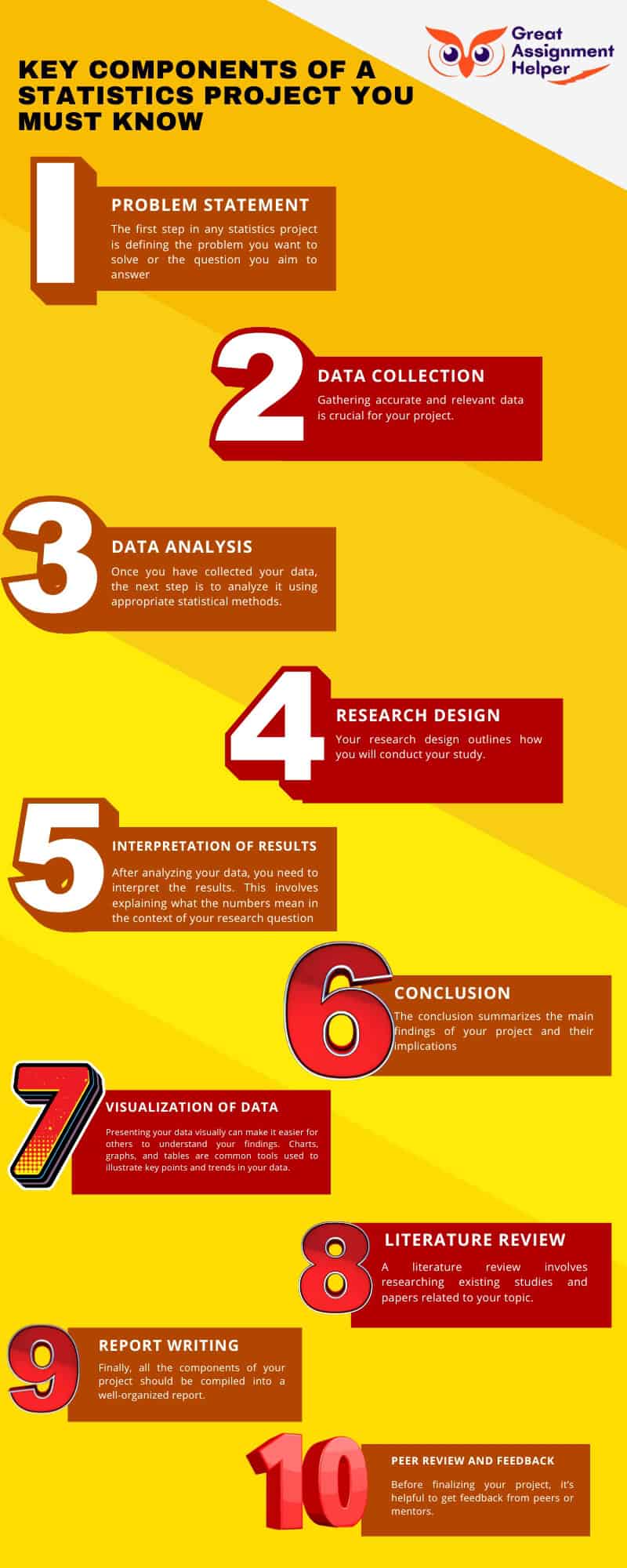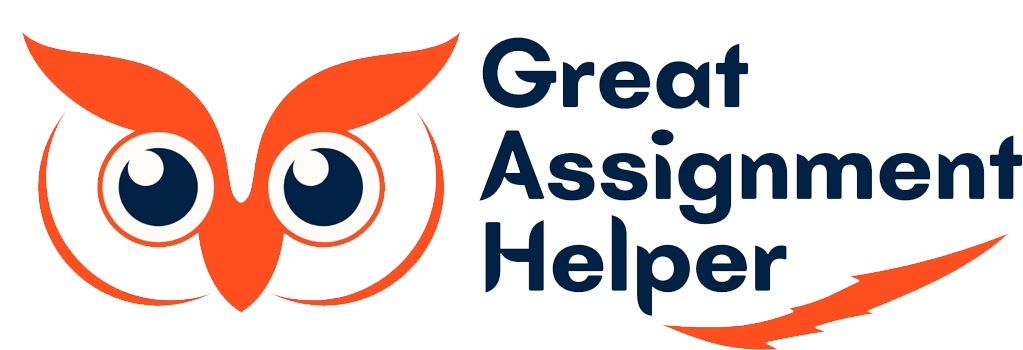
Listen To This Blog
Introduction
When it comes to completing a statistics project, choosing the right topic can be a daunting task. However, a well-chosen topic not only makes the project more engaging but also sets the stage for a successful academic journey. Statistics is a vital field that touches on many aspects of our lives, from business to social issues, and finding the right project idea can provide valuable insights into these areas. Whether you're a high school student or at the university level, exploring relevant and interesting topics can make a significant difference. At Great Assignment Helper, we understand the importance of selecting the best Statistics Project Ideas to ensure that your research stands out. With the right guidance, you can turn a challenging assignment into an opportunity to learn and excel.
Understand the Concept of Statistics Projects
Statistics projects are all about exploring data to find answers to important questions. These projects involve collecting, analyzing, and interpreting data to identify trends, patterns, or relationships. By working on a statistics project, you learn how to handle real-world data, use mathematical tools, and draw conclusions based on evidence. This process not only enhances your analytical skills but also helps you understand how data impacts decision-making in everyday life. Whether you’re investigating the effects of social media on student grades or studying the impact of a new business strategy, a statistics project gives you a practical way to apply what you’ve learned in class. The key to a successful project is clear thinking, careful data collection, and accurate analysis. With the right approach, you can make your statistics project both educational and enjoyable.
Also Read this: 80 Brilliant Science Fair Projects Ideas
What is Statistics?
Statistics is the science of collecting, analyzing, and interpreting data. It helps us make sense of numbers and figures by finding patterns and trends in the information we gather. Whether it's understanding the average test scores in a class or predicting weather patterns, statistics plays a crucial role in helping us make informed decisions. By using various tools and methods, statisticians can turn raw data into meaningful insights that guide businesses, governments, and individuals in making choices that impact everyday life. Statistics isn't just about numbers; it's about understanding the world around us through data, making it a powerful tool in many fields, from science and medicine to economics and education.
A List of Best Statistics Project Topics & Ideas
Choosing the right topic for your statistics project is essential for keeping your work engaging and relevant. Here are some great statistics project ideas that can help you explore different areas and develop a deeper understanding of how data shapes our world:
Statistics Project Ideas for High School and College Students
- The Effect of Social Media on Study Habits - Analyze how social media usage impacts the time students dedicate to their studies.
- Impact of Extracurricular Activities on Academic Performance - Explore the relationship between participation in sports, clubs, or arts and students' grades.
- Mobile Phone Usage and Sleep Patterns - Investigate how the use of mobile phones before bedtime affects the quality of sleep among students.
- The Role of Breakfast in Student Concentration - Study whether eating breakfast influences students' ability to focus during morning classes.
- Influence of Class Seating on Academic Success - Examine if sitting in the front, middle, or back of the classroom correlates with student performance.
- Trends in Student Attendance and Academic Achievement - Explore the link between regular attendance and academic success.
- Caffeine Consumption and Study Habits - Investigate how caffeine intake affects the study habits and alertness of students.
- The Impact of School Start Times on Student Performance - Analyze whether starting school earlier or later affects students' academic outcomes.
- The Relationship Between Physical Activity and Mental Health - Explore how regular exercise influences the mental well-being of students.
- Use of E-Books vs. Traditional Books - Compare student preferences and performance when using e-books versus traditional textbooks for studying.
Statistics Project Ideas on Socio-Economics
- Income and Education Levels - Analyze the relationship between household income and access to higher education in different regions.
- Impact of Unemployment on Crime Rates - Investigate how changes in unemployment rates influence crime levels in urban and rural areas.
- Housing Costs and Quality of Life - Explore how the cost of housing affects overall quality of life and economic stability in various communities.
- Gender Pay Gap Analysis - Study the differences in earnings between men and women across different industries and job roles.
- Effect of Minimum Wage Increases on Small Businesses - Analyze how raising the minimum wage impacts employment and profitability in small businesses.
- Healthcare Access and Socio-Economic Status - Investigate the correlation between socio-economic status and access to healthcare services.
- Income Inequality and Social Mobility - Explore how income inequality affects the ability of individuals to move up the economic ladder.
- Impact of Economic Recessions on Family Dynamics - Study how economic downturns influence family structures, such as divorce rates and birth rates.
- Food Insecurity in Low-Income Households - Analyze the prevalence of food insecurity and its effects on health outcomes in low-income communities.
- Effect of Education on Employment Opportunities - Investigate how different levels of education impact job prospects and earning potential in various industries.
Statistics Project Topics for University Students
- Impact of Climate Change on Agricultural Productivity - Analyze the effects of changing weather patterns on crop yields and farming practices.
- Relationship Between Social Media Usage and Mental Health - Investigate how time spent on social media platforms correlates with mental health issues among university students.
- Economic Factors Influencing College Enrollment Rates - Study how economic conditions, such as tuition costs and financial aid availability, affect student enrollment in higher education.
- Trends in Renewable Energy Adoption - Explore the growth of renewable energy sources and their impact on energy consumption patterns.
- Effectiveness of Online Learning vs. Traditional Classroom Learning - Compare the academic performance and satisfaction levels of students in online courses versus traditional in-person classes.
- The Role of Data Analytics in Business Decision-Making - Analyze how businesses use data analytics to drive strategic decisions and improve performance.
- Impact of Public Health Campaigns on Smoking Rates - Study the effectiveness of public health campaigns in reducing smoking prevalence among different age groups.
- Income Disparity and Crime Rates in Urban Areas - Investigate the link between income inequality and crime rates in major cities.
- The Relationship Between Physical Fitness and Academic Achievement - Explore how physical fitness levels correlate with academic success among university students.
- The Influence of Cultural Diversity on Team Performance - Analyze how cultural diversity within teams affects collaboration, creativity, and overall team performance in a university setting.
Miscellaneous Statistics Project Ideas for High School
- The Effect of Music on Student Concentration - Explore how different types of music impact students' ability to focus while studying.
- Influence of Screen Time on Sleep Patterns - Investigate the relationship between the amount of time spent on screens and the quality of sleep among high school students.
- Student Preferences: Online Learning vs. In-Person Classes - Analyze how students' preferences for online versus in-person learning environments affect their academic performance.
- The Role of Peer Pressure in Teen Decision-Making - Study how peer pressure influences the choices students make in areas such as academics, social life, and extracurricular activities.
- Impact of Part-Time Jobs on Academic Performance - Investigate how holding a part-time job affects students' grades and study habits.
- Popularity of Social Media Platforms Among Teens - Analyze which social media platforms are most popular among high school students and why.
- The Relationship Between Exercise and Stress Levels - Explore how regular physical activity influences stress and anxiety levels among students.
- Impact of School Lunch Choices on Student Health - Study how the nutritional content of school lunches affects students' overall health and energy levels.
- Gender Differences in Academic Performance - Investigate whether there are significant differences in academic achievement between male and female students in various subjects.
- Effect of Class Size on Student Engagement - Analyze how the number of students in a class influences their participation, engagement, and overall learning experience.
Key Components of a Statistics Project You Must Know

A well-structured statistics project involves several key components that guide the research process from start to finish. Understanding these elements is essential for producing a clear and effective project.
- Problem Statement
The first step in any statistics project is defining the problem you want to solve or the question you aim to answer. A clear and concise problem statement sets the direction for your entire project and helps you stay focused on your objectives. - Data Collection
Gathering accurate and relevant data is crucial for your project. This can involve surveys, experiments, observations, or using existing datasets. The quality of your data will directly impact the validity of your conclusions. - Data Analysis
Once you have collected your data, the next step is to analyze it using appropriate statistical methods. This may include calculating averages, trends, correlations, or more complex statistical tests. The goal is to uncover patterns and relationships within the data that address your problem statement. - Research Design
Your research design outlines how you will conduct your study. It includes the methods for data collection, the sample size, and how you plan to analyze the data. A well-thought-out design ensures that your study is scientifically sound and that your results are reliable. - Interpretation of Results
After analyzing your data, you need to interpret the results. This involves explaining what the numbers mean in the context of your research question. Are there significant trends or relationships? How do these findings relate to your original problem statement? - Conclusion
The conclusion summarizes the main findings of your project and their implications. It should clearly answer the research question posed in your problem statement and may also suggest further areas for research. - Visualization of Data
Presenting your data visually can make it easier for others to understand your findings. Charts, graphs, and tables are common tools used to illustrate key points and trends in your data. - Literature Review
A literature review involves researching existing studies and papers related to your topic. This helps you understand the background of your study and shows how your project contributes to the existing body of knowledge. - Report Writing
Finally, all the components of your project should be compiled into a well-organized report. This document should include an introduction, methodology, results, discussion, and conclusion, providing a complete overview of your research. - Peer Review and Feedback
Before finalizing your project, it’s helpful to get feedback from peers or mentors. This can help you identify any gaps or areas for improvement, ensuring that your project is as strong as possible.
Understanding and carefully implementing these key components will help you create a successful statistics project that is both informative and impactful.
Conclusion
In conclusion, a well-executed statistics project requires careful planning, data collection, and analysis to answer meaningful questions. By understanding the key components and selecting a strong topic, you can produce a project that showcases your skills and knowledge. Whether you’re dealing with socio-economic issues or exploring academic trends, a clear approach will help you achieve success. If you find yourself needing assistance, remember that Great Assignment Helper is here to provide expert Statistics Assignment Help to guide you through every step of your project, ensuring you achieve the best possible results.

